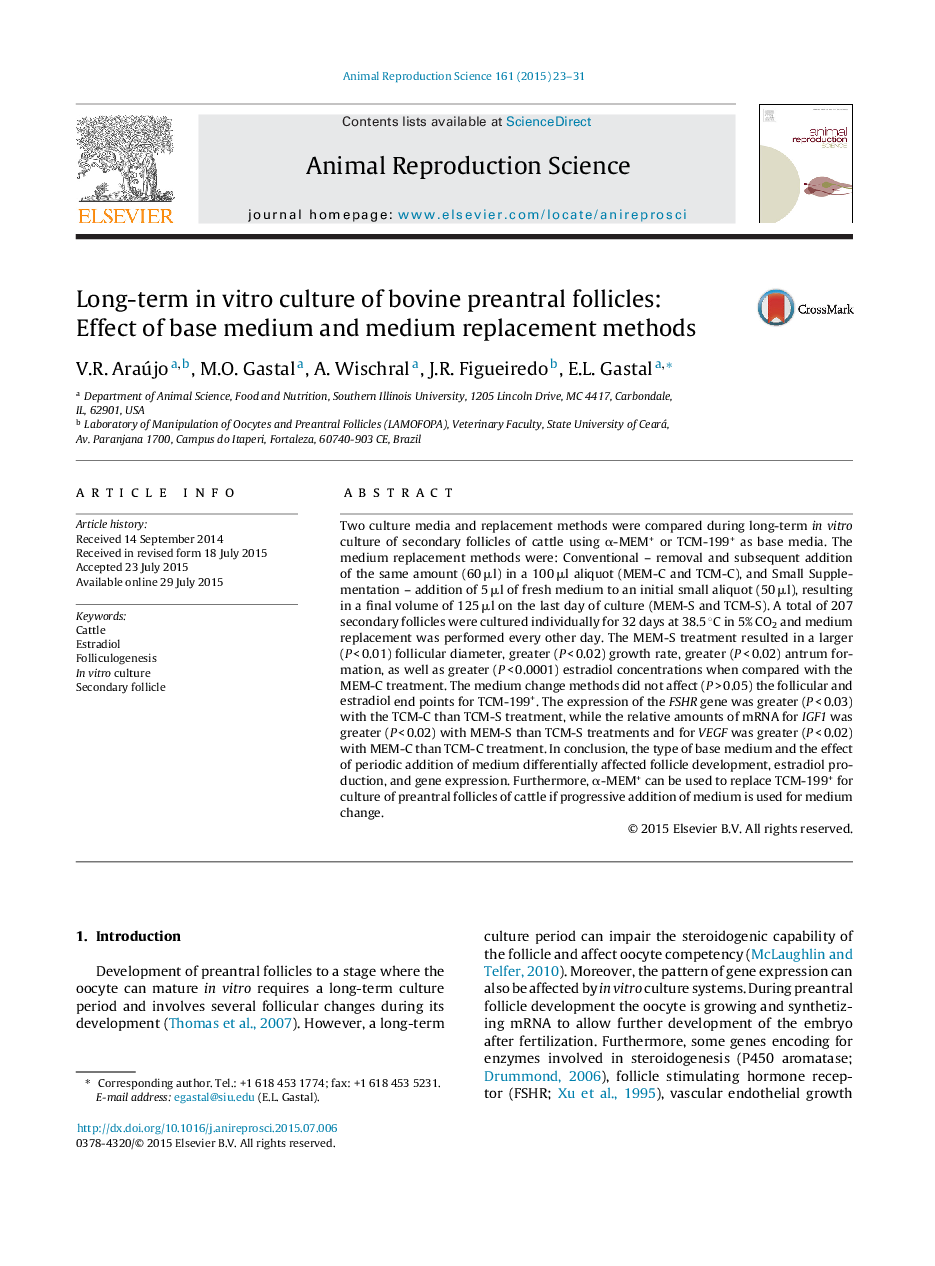| Article ID | Journal | Published Year | Pages | File Type |
|---|---|---|---|---|
| 8404309 | Animal Reproduction Science | 2015 | 9 Pages |
Abstract
Two culture media and replacement methods were compared during long-term in vitro culture of secondary follicles of cattle using α-MEM+ or TCM-199+ as base media. The medium replacement methods were: Conventional - removal and subsequent addition of the same amount (60 μl) in a 100 μl aliquot (MEM-C and TCM-C), and Small Supplementation - addition of 5 μl of fresh medium to an initial small aliquot (50 μl), resulting in a final volume of 125 μl on the last day of culture (MEM-S and TCM-S). A total of 207 secondary follicles were cultured individually for 32 days at 38.5 °C in 5% CO2 and medium replacement was performed every other day. The MEM-S treatment resulted in a larger (P < 0.01) follicular diameter, greater (P < 0.02) growth rate, greater (P < 0.02) antrum formation, as well as greater (P < 0.0001) estradiol concentrations when compared with the MEM-C treatment. The medium change methods did not affect (P > 0.05) the follicular and estradiol end points for TCM-199+. The expression of the FSHR gene was greater (P < 0.03) with the TCM-C than TCM-S treatment, while the relative amounts of mRNA for IGF1 was greater (P < 0.02) with MEM-S than TCM-S treatments and for VEGF was greater (P < 0.02) with MEM-C than TCM-C treatment. In conclusion, the type of base medium and the effect of periodic addition of medium differentially affected follicle development, estradiol production, and gene expression. Furthermore, α-MEM+ can be used to replace TCM-199+ for culture of preantral follicles of cattle if progressive addition of medium is used for medium change.
Related Topics
Life Sciences
Agricultural and Biological Sciences
Animal Science and Zoology
Authors
V.R. Araújo, M.O. Gastal, A. Wischral, J.R. Figueiredo, E.L. Gastal,
